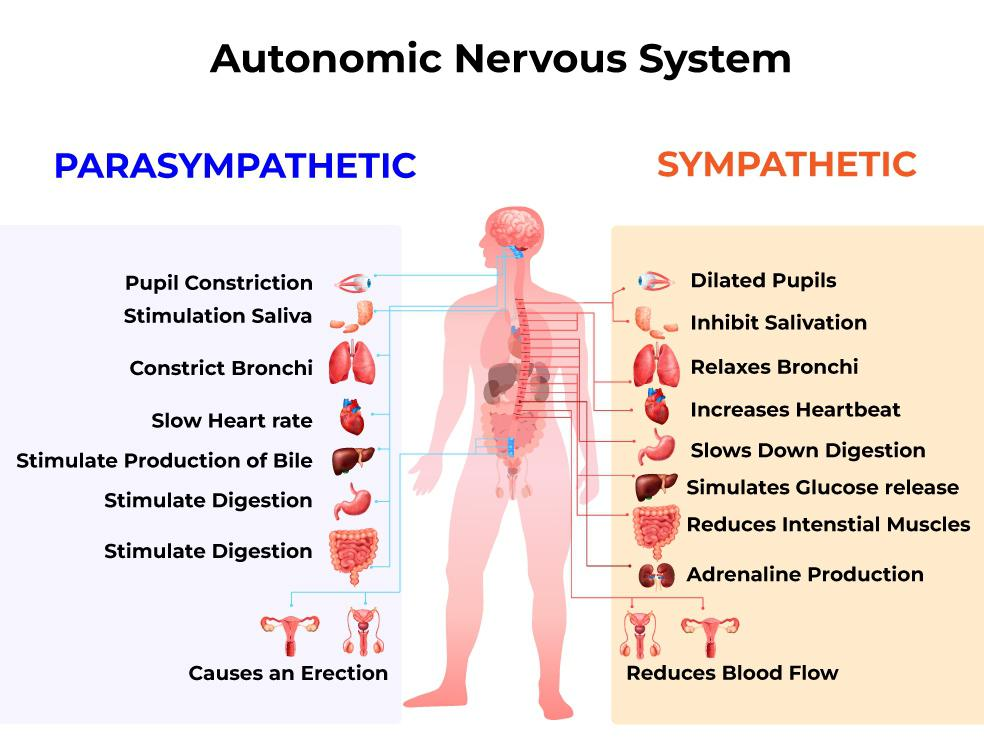—ENGLISH-ANATOMY UNIT 11. NERVOUS SYSTEM. (PART :3) Autonomic Nervous System
AUTONOMIC NERVOUS SYSTEM:
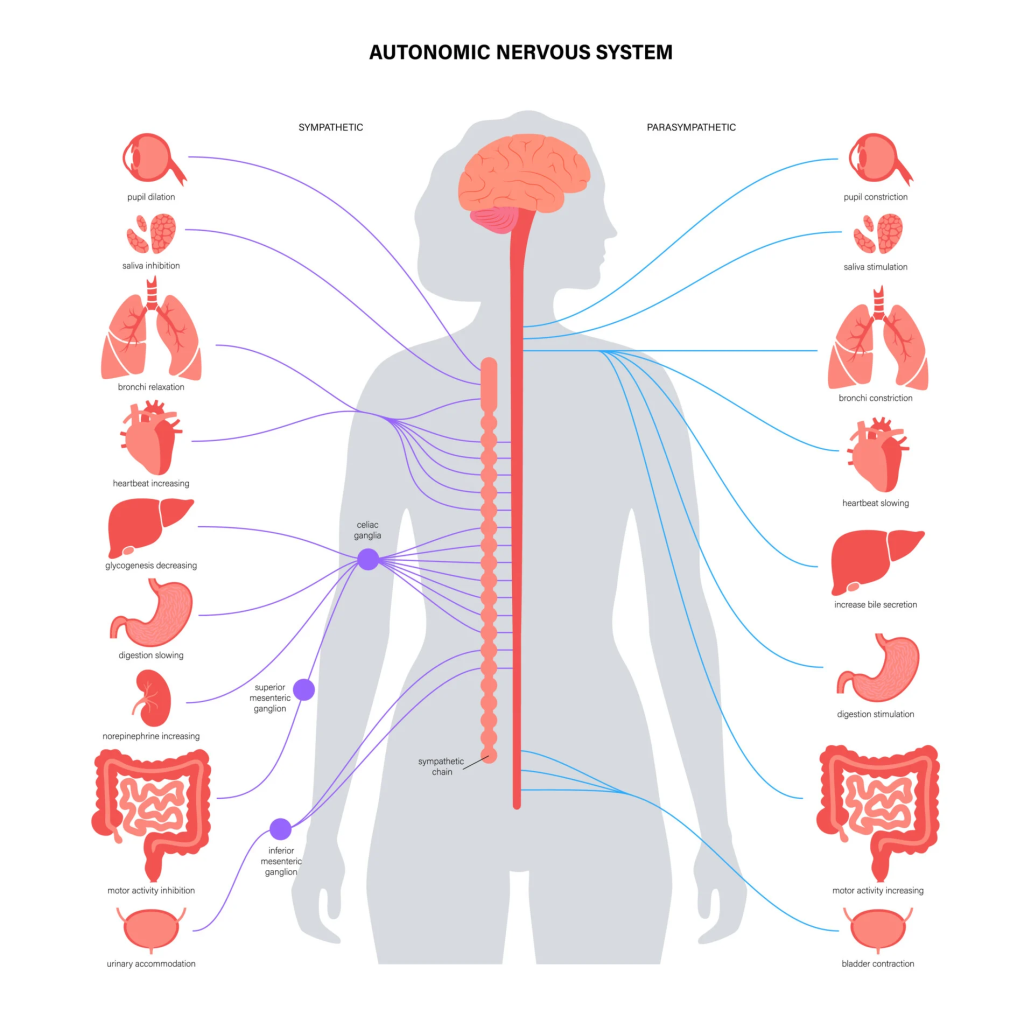
- The autonomic nervous system is the part of the involuntary nervous system that controls the autonomic functions of the body.
- It originates from the lower part of the cerebrum of the brain and is connected to the visceral organs of the body.
The autonomic nervous system is divided into 2 parts.
1.Sympathetic Nervous System
2.Parasympathrtic Nervous System (Parasympathetic Nervous System)
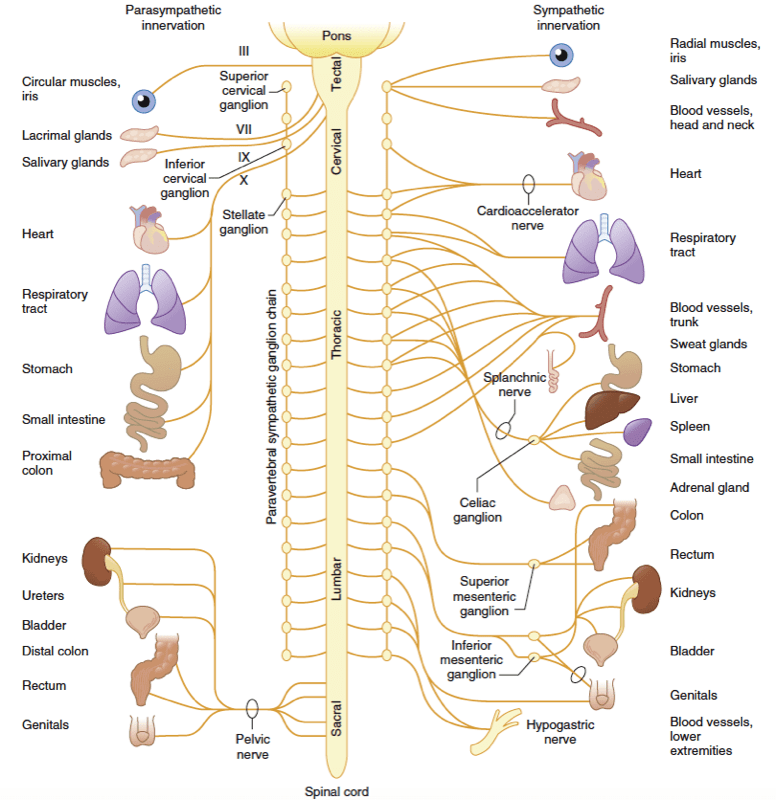
1.Sympathetic Nervous System (Sympathetic Nervous System):

The sympathetic nervous system stimulates the body’s fight and flight response, which regulates the body’s involuntary functions.
It is known as thoracolumbar outflow and is found at the level of T1-L2 spinal cord.
2.Parasympathetic Nervous System:
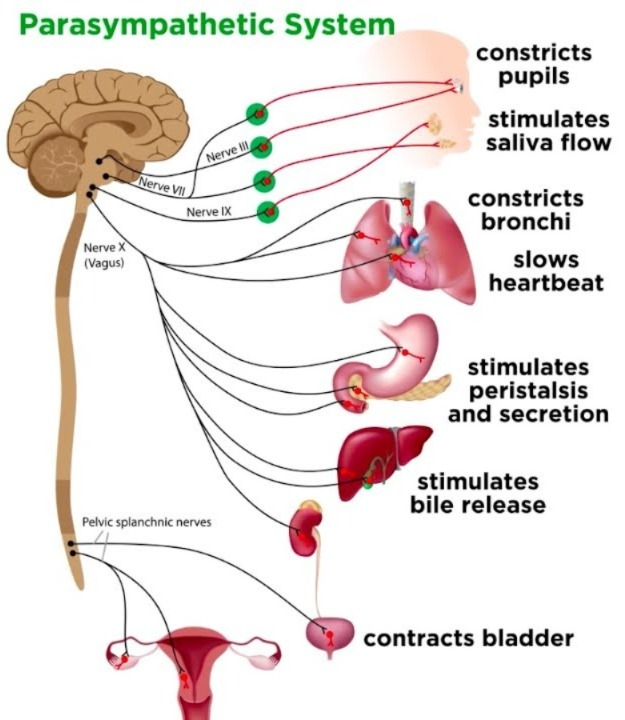
It is found to be activated in relaxed situations.
It is known as craniosacral outflow. It originates from the sacral segment of the brain and spinal cord.
Functions of ANS (Functions of Autonomic Nervous System):
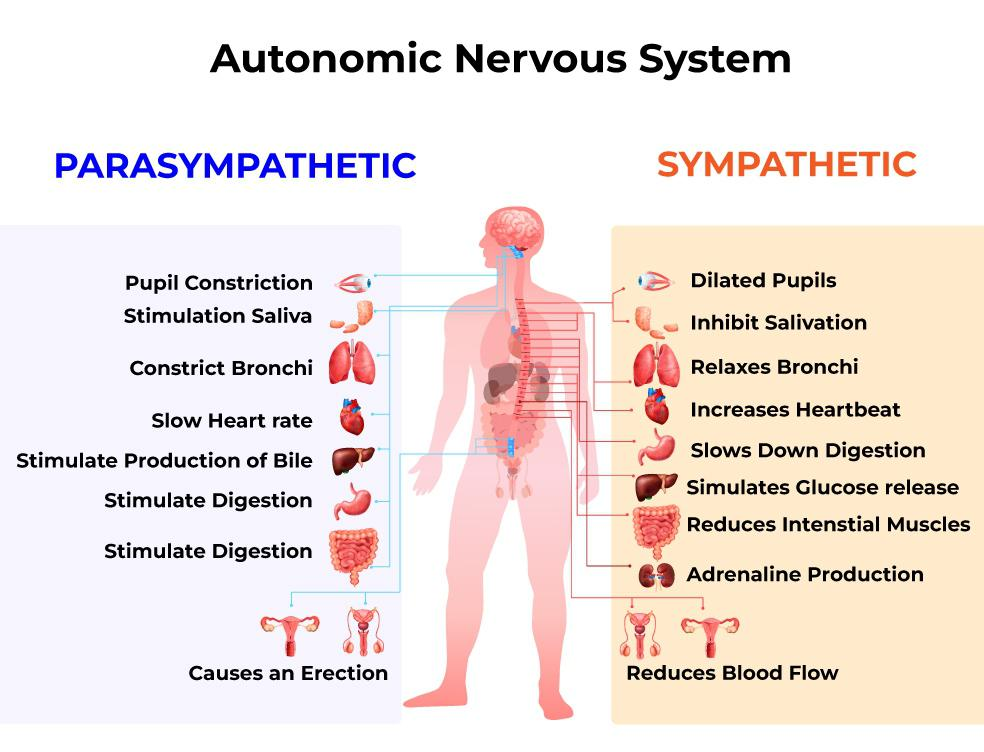
- The sympathetic nervous system increases the rate and force of the heart while the parasympathetic nervous system decreases it.
- The sympathetic nervous system dilates the pupils while the parasympathetic nervous system constricts them.
- The sympathetic nervous system dilates the trachea and bronchi while the parasympathetic nervous system constricts them.
- The sympathetic nervous system decreases intestinal secretion and motility while the parasympathetic nervous system increases it.
- The sympathetic nervous system decreases urinary secretion while the parasympathetic nervous system increases it.
- The sympathetic nervous system decreases stomach secretion and motility while the parasympathetic nervous system increases it.
Explain the body temperature regulation in humans. (Explain body temperature regulation in humans.)
- Heat regulation in the human body means maintaining a balance between heat production and heat loss in the body. Normally, the normal body temperature in humans is found to be 36.5 to 37 degrees Celsius. Only if this temperature is maintained normal, every function in the body is maintained regularly and internal homeostasis can be maintained.
- The structure that regulates body temperature in humans is the thermoregulatory center located in the hypothalamus. The thermoreceptors in the body receive nerve impulses of temperature to the hypothalamus, and the hypothalamus acts accordingly to determine the normal body temperature.
- Heat production occurs in the body due to metabolic activity, movement of skeletal muscles, etc. When the body temperature is higher than normal, the hypothalamus stimulates the sweat glands to lose excess heat from the body through perspiration and helps maintain regular body temperature.
- When the body temperature is lower than normal, the sweat glands are not active and the body maintains normal body temperature by preserving heat. Thus, the hypothalamus plays an important role in maintaining normal body temperature.
